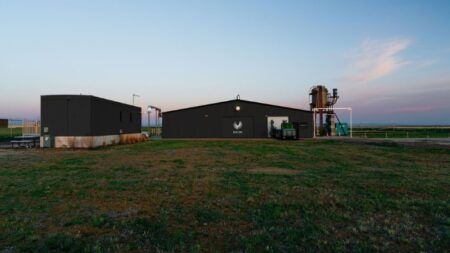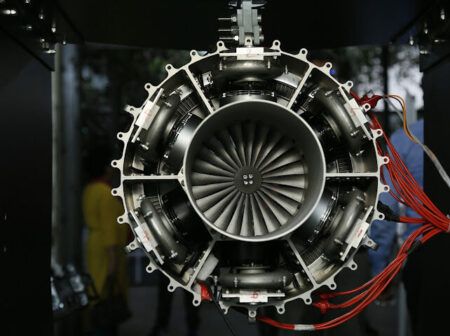Car, truck, train and aircraft manufacturers have made great strides in recent years to reduce fuel consumption, resulting in consumer savings and lower emissions. With NASA’s help, the aircraft industry is striving to increase fuel efficiency even more.
One way to do that is to create new aircraft engine designs. Engineers at NASA’s Glenn Research Center in Cleveland, Ohio, are testing a new fan and inlet design, commonly called a propulsor, which could increase fuel efficiency by 4-8% more than the advanced engine designs airlines are beginning to use.
On today’s jet aircraft, the engines are typically located away from the aircraft’s body to avoid ingesting the layer of slower flowing air that develops along the aircraft’s surfaces, called boundary layer. Aerospace engineers believe they can reduce fuel burn by embedding an aircraft’s engines into these surfaces and ingesting the boundary layer air flow to propel the aircraft through its mission.
It sounds like a simple design change, but it’s actually quite challenging. Boundary layer air flow is highly distorted, and that distortion affects the way the fan performs and operates. These new designs require a stronger fan.
To address these challenges, NASA Glenn is testing a new propulsor in its 8 x 6ft wind tunnel. Designed by United Technologies Research Center, with research conducted by Virginia Polytechnic Institute and State University, the rugged boundary layer ingesting (BLI) inlet-fan combination is the first of its kind ever to be tested.
“Studies backed by more detailed analyses have shown that boundary layer ingesting propulsors have the potential to significantly improve aircraft fuel efficiency,” said David Arend, a BLI propulsion expert at NASA Glenn. “If this new design and its enabling technologies can be made to work, the BLI propulsor will produce the required thrust with less propulsive power input. Additional aircraft drag and weight reduction benefits have also been identified.”
The highly experimental tests required years of preparation. Many industry, NASA and academic experts contributed to the design and analysis of the propulsor. NASA Glenn engineers also modified the wind tunnel to accept a larger model, a boundary layer control system and a way to power the experiment.
“We have generated a unique test capability that doesn’t exist anywhere in the country for testing boundary layer ingesting propulsors,” said Jim Heidmann, manager of NASA’s Advanced Air Transport Technologies project.
Throughout testing, the team will change the wind speed and vary the boundary layer thickness and fan operation to see how these changes affect the propulsor’s performance, operability and structure. Results of the tests will be applicable to multiple cutting-edge aircraft designs being pursued by NASA as well as by its academic and private industry partners.
December 13, 2016




